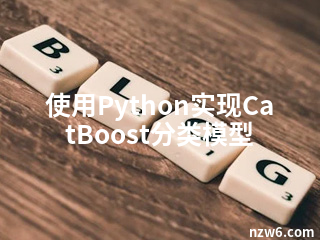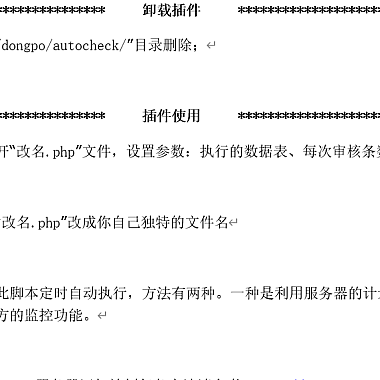使用Python实现CatBoost分类模型
CatBoost是由Yandex开发的一种梯度提升决策树算法,特别适合处理分类特征。下面我将展示如何使用Python实现CatBoost分类模型。
1. 安装CatBoost
需要安装CatBoost库:
pip install catboost
2. 基本实现代码
import numpy as np
import pandas as pd
from catboost import CatBoostClassifier, Pool
from sklearn.model_selection import train_test_split
from sklearn.metrics import accuracy_score, classification_report
# 加载数据集(这里以鸢尾花数据集为例)
from sklearn.datasets import load_iris
data = load_iris()
X = pd.DataFrame(data.data, columns=data.feature_names)
y = data.target
# 划分训练集和测试集
X_train, X_test, y_train, y_test = train_test_split(X, y, test_size=0.2, random_state=42)
# 定义分类特征(如果有的话)
# CatBoost可以自动处理分类特征,但需要明确指定哪些是分类特征
cat_features = [] # 在这个例子中没有分类特征
# 创建CatBoost分类器
model = CatBoostClassifier(
iterations=500, # 树的数量
learning_rate=0.1, # 学习率
depth=6, # 树的深度
loss_function='MultiClass', # 多分类问题
verbose=100, # 每100次迭代显示一次日志
random_seed=42
)
# 训练模型
model.fit(
X_train, y_train,
cat_features=cat_features,
eval_set=(X_test, y_test),
plot=True # 显示训练过程图表
)
# 预测
y_pred = model.predict(X_test)
y_pred_proba = model.predict_proba(X_test)
# 评估模型
print(f"Accuracy: {accuracy_score(y_test, y_pred):.4f}")
print("\nClassification Report:")
print(classification_report(y_test, y_pred))
# 特征重要性
feature_importance = model.get_feature_importance()
feature_names = X.columns
for score, name in sorted(zip(feature_importance, feature_names), reverse=True):
print(f"{name}: {score:.2f}")
3. 使用分类特征示例
如果数据集中包含分类特征,可以这样处理:
# 假设我们有一个包含分类特征的数据集
data = {
'num_feature1': np.random.rand(1000),
'num_feature2': np.random.rand(1000),
'cat_feature1': np.random.choice(['A', 'B', 'C'], size=1000),
'cat_feature2': np.random.choice(['X', 'Y'], size=1000),
'target': np.random.choice([0, 1], size=1000)
}
df = pd.DataFrame(data)
X = df.drop('target', axis=1)
y = df['target']
# 指定分类特征列名
cat_features = ['cat_feature1', 'cat_feature2']
# 划分数据集
X_train, X_test, y_train, y_test = train_test_split(X, y, test_size=0.2, random_state=42)
# 创建模型
model = CatBoostClassifier(
iterations=500,
learning_rate=0.05,
depth=5,
loss_function='Logloss', # 二分类问题
eval_metric='AUC',
cat_features=cat_features,
verbose=100
)
# 训练模型
model.fit(X_train, y_train, eval_set=(X_test, y_test))
# 预测和评估
y_pred = model.predict(X_test)
print(f"Accuracy: {accuracy_score(y_test, y_pred):.4f}")
4. 高级功能
交叉验证
from catboost import cv
params = {
'loss_function': 'Logloss',
'iterations': 100,
'learning_rate': 0.1,
'depth': 3
}
cv_data = cv(
params=params,
pool=Pool(X, y, cat_features=cat_features),
fold_count=5,
shuffle=True,
partition_random_seed=0,
plot=True
)
自定义评估指标
class LoglossMetric(object):
def get_final_error(self, error, weight):
return error / (weight + 1e-38)
def is_max_optimal(self):
return False
def evaluate(self, approxes, target, weight):
# approxes - 预测值
# target - 真实值
# weight - 权重
error_sum = 0.0
weight_sum = 0.0
for i in range(len(target)):
w = 1.0 if weight is None else weight[i]
weight_sum += w
error_sum += w * (target[i] * approxes[i] + (1 - target[i]) * (1 - approxes[i]))
return error_sum, weight_sum
model = CatBoostClassifier(
iterations=100,
learning_rate=0.1,
eval_metric=LoglossMetric()
)
5. 模型保存与加载
# 保存模型
model.save_model('catboost_model.cbm')
# 加载模型
loaded_model = CatBoostClassifier()
loaded_model.load_model('catboost_model.cbm')
# 使用加载的模型进行预测
y_pred_loaded = loaded_model.predict(X_test)
CatBoost的优势在于它对分类特征的原生支持、自动处理缺失值、减少过拟合的特性,以及通常不需要太多的参数调优就能获得不错的结果。
(牛站网络)









